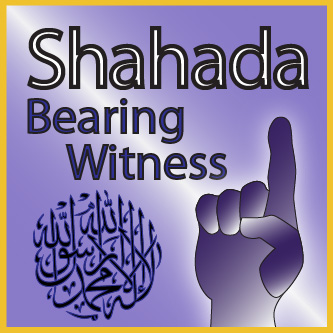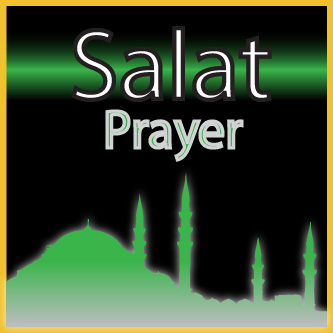Question:
Asalamu Alaykum Shaykh.
It is allowed as per Shaykh Nuh Ha Meem Keller to invoke Prophet s.a.w and awliya q.s for help? As per the correct intention we invoke through the high stations attached to their name before Allah s.w.t and not through their physical bodies. But, why is it impermissible in Qur’an to invoke the same awliya when people carved Idols in their remembrance and they invoked through their high station before Allah s.w.t as in the case of generations after nuh a.s.
In both cases we are invoking through their rank not their idols or physical bodies? I’m confused perhaps you can clarify
Answer:
786
Wa `alaykum as-Salam wa rahmatullah.
To begin with, such an understanding of sainthood is miserly, suggesting that sanctity does not exist in the physical realm. At the very least this recalls the Christian practice of formally recognizing sanctity only after physical death, and at its worst it leads to the Dualist error of identifying physical existence itself as an evil creation.
Shaykh `Abdul Wahid Yahya has informed Western people in his article “Is the Spirit in the Body or the Body in the Spirit?” of the saying “that Islamic tradition puts in the mouth of the awliya: ‘Our bodies are our spirits and our spirits are our bodies’ (ajsamna arwahna, wa arwahna ajsmana), which indicates not only that all the elements of the being are wholly unified in the ‘Supreme Identity,’ but also that the ‘hidden’ has become the ‘visible,’ and inversely.” He concludes with the following description of Universal Man: “‘If he walks on sand he leaves no trace; if he walks on rock his feet leave their imprint. If he stands in the sun he projects no shadow; in darkness a light emanates from him.'”
This description no doubt belongs to Sayyidina Muhammad, peace and blessings be upon him, and his “universality” encompasses all degrees of creation. We must accept that for him, the experience of revelation was borne physically, his Night Journey and Ascension was accomplished bodily, and he is still alive in his grave. As for the Muhammadan inheritors, in the words of the Dhun-Nun al-Misri, may Allah sanctify his secret: “The Qur’an has mingled with their flesh and blood.”
Secondly, I have difficulty understanding your reference to the invocation of sainthood through idolatry. Do you imagine that such were the idols broken by Sayyidina Ibrahim, peace be upon him, or were cleansed from the Holy Ka`ba in the Opening of Makkah?
On the subject of idolatry in relation to Islamic esoterism, the Naqshbandi master of the Golden Chain Shaykh Habibullah Mazhar Jan-i Janan, may Allah sanctify his secret, has left a remarkable evaluation of the “idolatry” of Hindustan:
…the haqiqat of their idol-worship is (their belief) that there are certain angelic beings who, following the Divine decree, can divert their powers towards this created and corrupt world. These include the spirits of perfect beings…Having carved idol-statues of these, they focus their spiritual attention on them…This practice resembles closely the technique of rabita, a method commonly used by the Sufis, which consists of concentrating interiorly on the figure of the shaykh thus obtaining the effluence of spiritual grace irradiating from him. The only difference being that (the Sufis) do not build any exterior image of their shaykh…
There are very real dangers in this difference. After all, in addition to angelic presences and physical bodies, the cosmos includes the intermediary and psychic influences of the jinn; and a physical body – especially an artificial one, given its unnatural origin – may serve as the support for such influences of the most sinister character. It is with such dangers in mind that the destruction of the idol of al-`Uzza at Nakhlah should be considered, a feat accomplished by the Sword of Allah Khalid bin al-Walid, may Allah be pleased with him, on the order of the Holy Prophet, peace and blessings be upon him.
Incidentally, the physical postures of yoga are quite literally “seats” or supports; but with the practice of yoga divorced from its proper Hindustani milieu, the question arises of what its postures serve as a support for, especially when yoga is thought to be completely free of spirituality.
Obviously the postures of the salah have been instituted by the Divine decree as a support for spirituality, and the shari`ah itself may be properly understood as a path to “spiritualizing” the body for the people of the Last Days. In contrast, the Christian world has failed to adhere to a shari`ah. Certainly the historical Jesus – peace be upon him – did not provide an example for many dimensions of corporeal existence, and his body is not to be found in his “Holy Sepulchre.” Not unrelated to these facts is the Christian world’s failure to defend nature, and to oppose evil in this world.
Indeed, the Holy Qur’an has established the precedent for another kind of “spiritualized matter” in finding success in this world:
And their prophet said unto them: Lo! the sign of his kingdom (mulk) is that there shall come unto you the tabut wherein is sakinah from your Lord, and a remnant (baqiyyah) of that which the house of Moses and the house of Aaron left behind, the angels bearing it. Lo! herein shall be a sign for you if (in truth) ye are believers. (II, 248)
This sign concerns authority in the mulk, that is, the realm of physical existence; here the “remnant” is a treasury of physical relics. It should also be observed that tabut refers in Islam not only as here to the “Ark of the Covenant;” when it is applied to the ark of the infant Moses, peace be upon him, tabut corresponds to the receptacle of the human nasut; the word also applies to the sarcophagus of a saint. In all these cases the contained “remnants” serve as supports for spiritual blessings, yet here angels bear the container, and this reversal of normal relationships relates to Shaykh `Abdul Wahid Yahya’s commentary quoted above. Since the Ottomans were believers, they likewise brought relics of the Sultan of Prophets – peace and blessings be upon him – with them on military campaigns. As for the Ark of the Covenant, Traditions mention that it will once again become visible with the appearance of al-Mahdi, peace be upon him.
Sanctity must exist in physical bodies, not as idols, but as part of the universal perfection of Muhammadu rasulullah. No doubt in our approach to spirituality, the highest symbol for our means of approach is the “lowest” degree of the Beloved One’s physical form, his Noble Sandal (na`l sharif).
Mahmoud Shelton






